Indonesia is known worldwide for its enormous biodiversity, with more than seventeen thousand islands providing habitats for various species of flora and fauna.
The country’s geographical location and diverse climate make it the perfect place for a wide range of bird species to thrive. Indonesia is home to more than 1,700 species of birds, including 370 endemic species, making it one of the best birdwatching destinations in the world.
From the lush rainforests of Sumatra and Kalimantan to the tropical islands of Bali and Sulawesi, Indonesia’s birdlife offers a unique and thrilling experience for any birding enthusiast.
In this article, we will provide an overview of the different bird species found in Indonesia and their unique features.
1. Sunda Teal
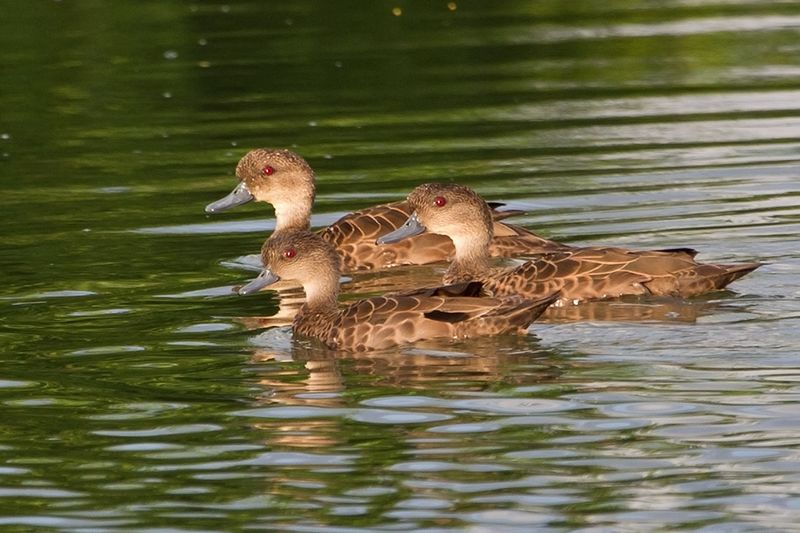
The Sunda teal is a dabbling duck found in open wetlands throughout Indonesia. It has a unique, colourful appearance which includes brown and grey feathers with white spots.
The species was previously thought to include two other subspecies but molecular studies have since confirmed it as monotypic.
They are often seen alone or in small groups near shallow water, where they feed on aquatic vegetation such as seeds and algae.
This bird also makes its home among reed beds for nesting purposes and can be heard making soft quacking sounds during the breeding season when looking for mates.
As an endangered species, it’s important that we protect their habitats so this beautiful creature can continue to call our wetlands home.
Scientific classification:
| Kingdom | Animalia |
| Phylum | Chordata |
| Class | Aves |
| Order | Anseriformes |
| Family | Anatidae |
| Genus | Anas |
| Species | A. gibberifrons |
Also Featured In: Beautiful Indonesian Birds,
2. Lesser Crested Tern
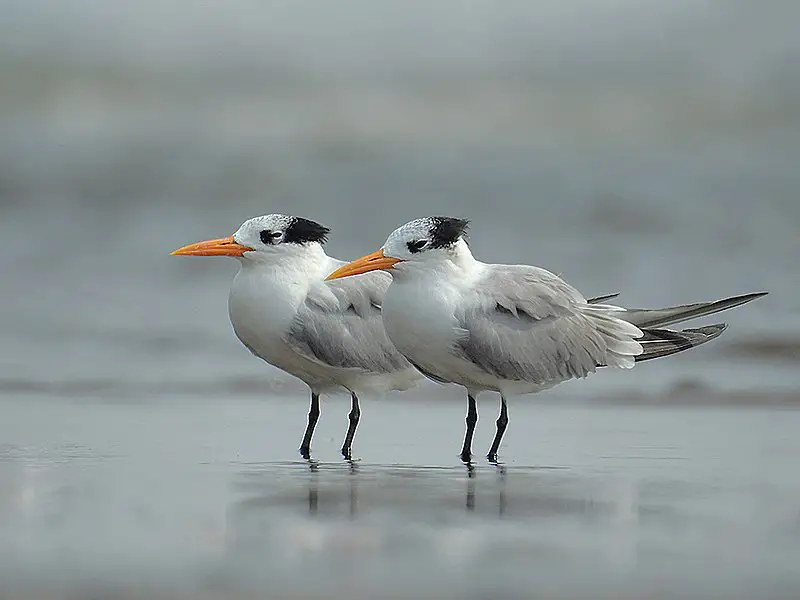
The lesser crested tern is a beautiful bird belonging to the Laridae family. It can be found breeding in subtropical coastal parts of the world, mainly from Red Sea across Indian Ocean.
Its genus name comes from Ancient Greek word Thalasseus which means fisherman and its specific bengalensis refers to Bengal, historically referring to much of northern India and Bangladesh.
The adult has white plumage with grey on wings and back; black cap extending behind eye; long pointed bill yellow tipped red at base, orange legs and feet.
They feed primarily by plunge-diving for fish near shore but may also take some insects or scavenge off boats or piers when given opportunity.
This species nests in colonies often on beaches or islands with other seabirds where it lays two eggs per clutch that are incubated for about a month before hatching.
Scientific classification:
| Kingdom | Animalia |
| Phylum | Chordata |
| Class | Aves |
| Order | Charadriiformes |
| Family | Laridae |
| Genus | Thalasseus |
| Species | T. bengalensis |
Also Featured In: Common Birds of Maharashtra, Common Townsville Birds
3. Besra
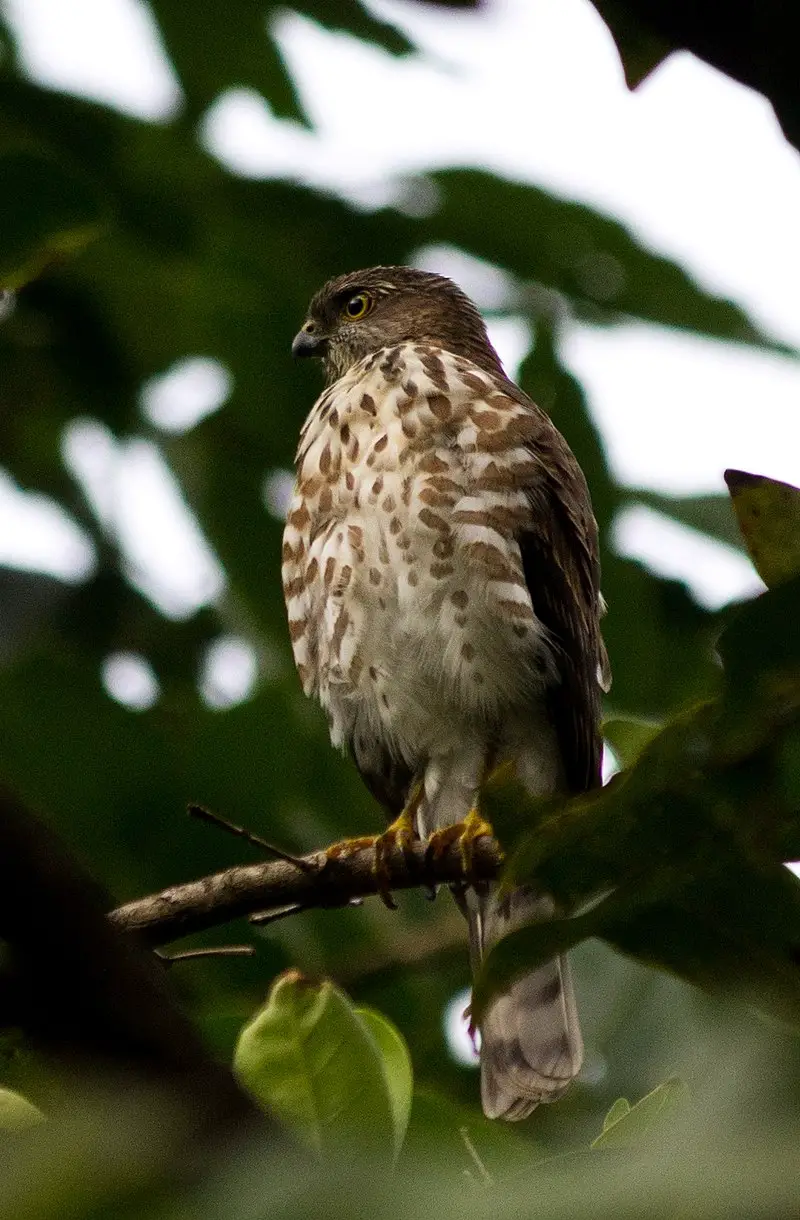
The Besra is a small bird of prey, belonging to the Accipitridae family. It can be found in dense forests across Southern Asia and East Asia.
The besra typically builds new nests each year, usually out of twigs and leaves, laying 2-5 eggs at a time.
Its size ranges from 29 t 40cm long with broad wings for soaring through the air quickly and efficiently when hunting for its food which mainly consists of insects or other small animals like rodents or lizards.
This agile predator uses its sharp vision to locate potential meals both on land as well as water bodies nearby where it may swoop down to catch unsuspecting fish too.
Scientific classification:
| Kingdom | Animalia |
| Phylum | Chordata |
| Class | Aves |
| Order | Accipitriformes |
| Family | Accipitridae |
| Genus | Accipiter |
| Species | A. virgatus |
Also Featured In: Common Philippines Birds, Birds of Karnataka
4. Black Baza
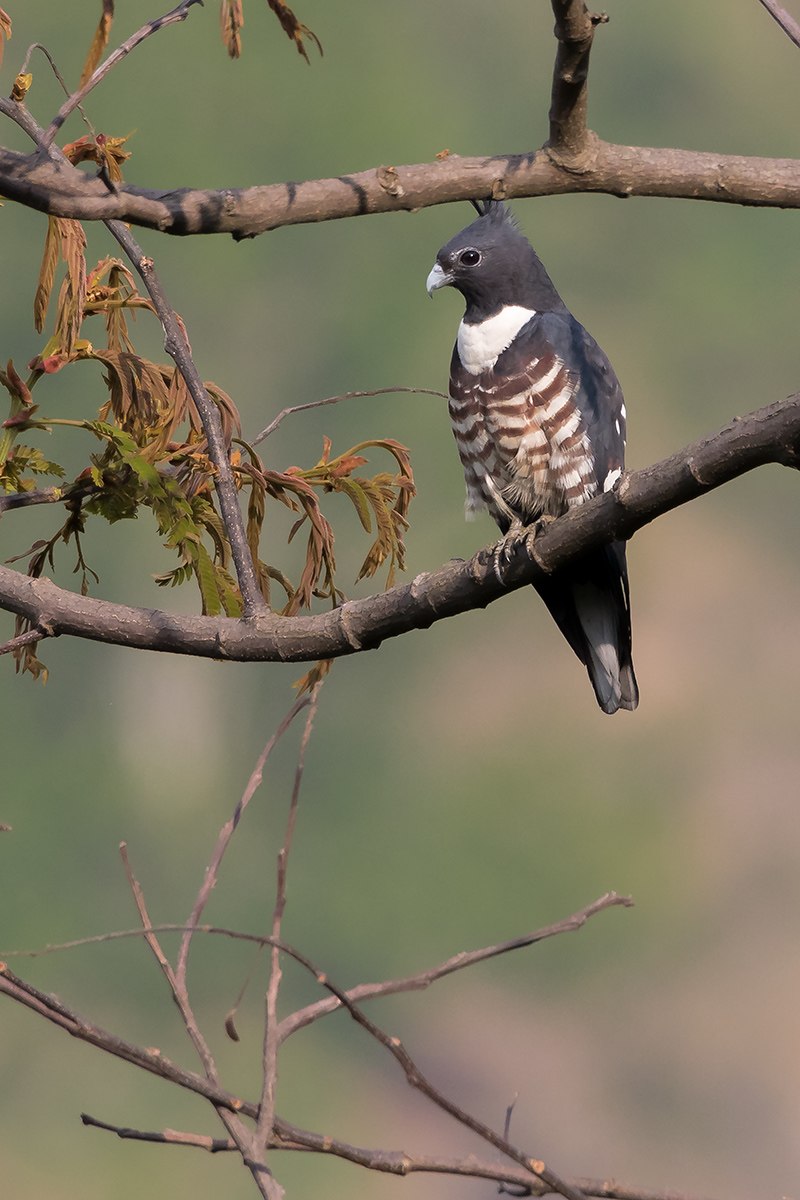
The Black Baza is a small bird of prey found in the forests of Northeast India, Eastern Himalayas. China and Southeast Asia. It has short stout legs with strong talons for gripping its prey and sports a prominent crest atop its head.
During winter season many populations migrate to south Peninsula and Sri Lanka where they can find food more easily than their native habitats dense forest areas.
The black bazas diet consists mainly of insects, lizards, small birds or mammals as well as fruits like figs which make up about 45% of what it eats during summer months when insect availability is low around them.
Scientific classification:
| Kingdom | Animalia |
| Phylum | Chordata |
| Class | Aves |
| Order | Accipitriformes |
| Family | Accipitridae |
| Genus | Aviceda |
| Species | A. leuphotes |
Also Featured In: Common Birds Found in Nepal, Birds that Migrate to Sri Lankan
5. Milky Stork
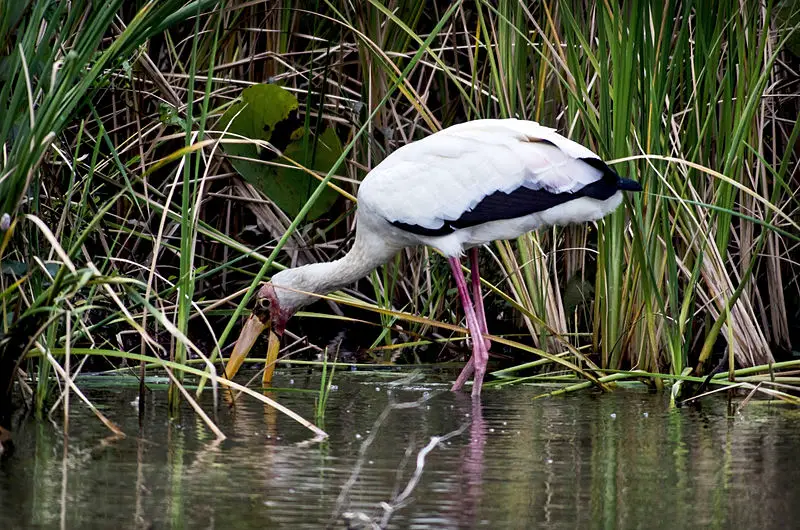
The Milky Stork is a large, white bird found in coastal mangroves of Southeast Asia. Native to Cambodia, Vietnam, Malaysia and Indonesia it has an impressive wingspan between 43-55 cm with a body length that can reach up to 97cm.
The species was once part of the Ibis genus but recently reclassified into its own Mycteria genus due to similarities with other storks like Black necked or Woolly Necked Storks.
It feeds primarily on fish by wading through shallow waters – thrusting its head underwater for prey then rising again for air as needed.
They are social birds often seen congregating together along the coasts during breeding season where they construct nests high above ground from sticks and twigs lined with mud and leaves inside tree hollows or tall grasses near water sources such as rivers or swamps.
Scientific classification:
| Kingdom | Animalia |
| Phylum | Chordata |
| Class | Aves |
| Order | Ciconiiformes |
| Family | Ciconiidae |
| Genus | Mycteria |
| Species | M. cinerea |
Also Featured In: Birds of Cambodia,
6. Dwarf Cassowary
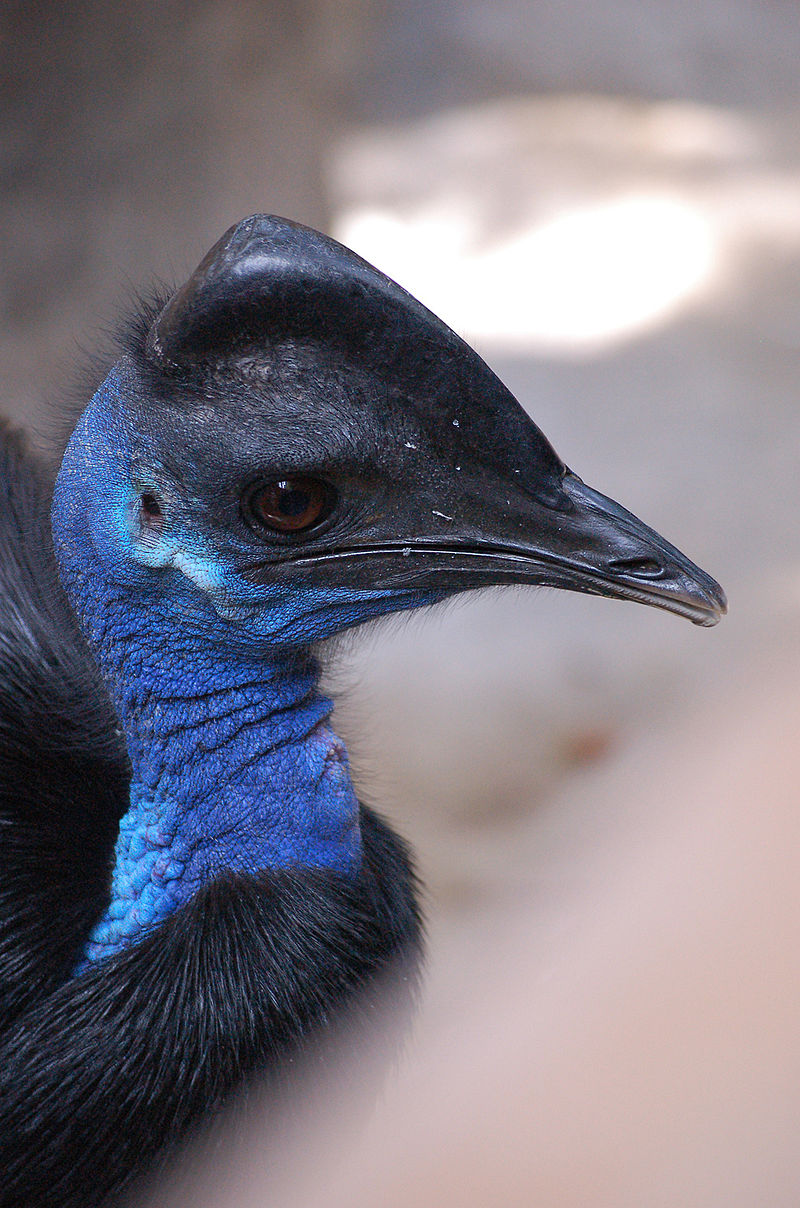
The Dwarf Cassowary is the smallest of its species, standing at around 3-4 feet tall. It can be found in New Guinea and northern Australia. Its plumage ranges from black to a deep purple hue with brighter red chest feathers.
The scientific name of this bird commemorates George Bennett, an Australian naturalist who was among the first to identify it after some were brought aboard a ship from their native environment.
Their diet consists mainly of fruits but they are also known for eating small animals such as lizards or frogs and insects like beetles, grasshoppers and caterpillars; these birds will often use their powerful claws to dig up roots looking for food sources.
They have adapted well to living near humans too which helps them find meals more easily than other cassowaries might in wilder parts of their range.
Scientific classification:
| Kingdom | Animalia |
| Phylum | Chordata |
| Class | Aves |
| Infraclass | Palaeognathae |
| Order | Casuariiformes |
| Family | Casuariidae |
| Genus | Casuarius |
| Species | C. bennetti |
Also Featured In: Papua New Guinea birds,
7. Large Green Pigeon
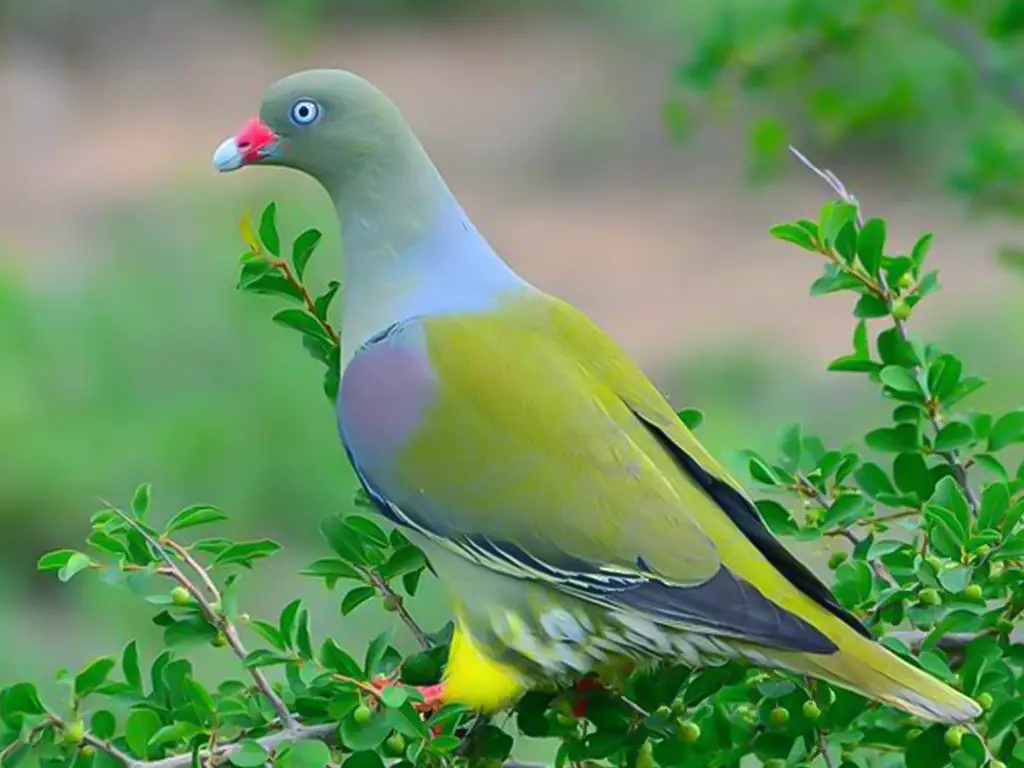
The large green pigeon is a species of bird found in Brunei, Indonesia, Malaysia, Myanmar and Thailand. It inhabits lowland forests and its population across Southeast Asia stands between 15-30 thousand individuals.
This species has experienced significant habitat loss due to deforestation which poses the greatest threat to their conservation status as well as causing fragmentation of existing populations.
The diet of this species consists mainly of fruits such as figs but they are also known to eat some flowers and buds at times.
They form small flocks when foraging on fruit trees or drinking from sources like streams or waterholes during dry season months.
Conservation efforts should focus on protecting their natural habitats so that these birds can continue thriving in our region for years to come.
Scientific classification:
| Kingdom | Animalia |
| Phylum | Chordata |
| Class | Aves |
| Order | Columbiformes |
| Family | Columbidae |
| Genus | Treron |
| Species | T. capellei |
Also Featured In: Brunei Darussalam Birds,
8. Pied Stilt
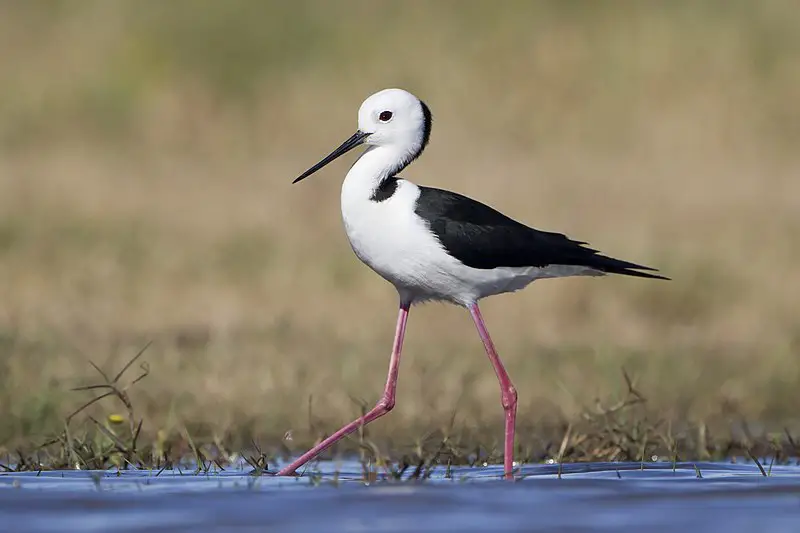
The Pied Stilt is a shorebird belonging to the family Recurvirostridae, and can be found in Malaysia, Japan, Philippines, Brunei, Christmas Island and other parts of Asia as well as Australia and New Zealand.
It has an impressive total population size with no apparent decline in numbers. This species stands out thanks to its white head which contrasts against its black neck and back feathers.
When feeding they wade through shallow waters or mudflats searching for small aquatic animals such as insects or crustaceans that make up their diet.
These birds are highly gregarious when nesting but disperse during winter months due to food shortage on the breeding grounds making them difficult to observe during this time of year.
Though currently listed as Least Concern by IUCN there could still be potential threats from human activities like habitat destruction so it’s important we continue monitoring populations closely into future years.
Scientific classification:
| Kingdom | Animalia |
| Phylum | Chordata |
| Class | Aves |
| Order | Charadriiformes |
| Family | Recurvirostridae |
| Genus | Himantopus |
| Species | H. leucocephalus |
Also Featured In: Christmas Island Birds, Birds that You’ll find in Perth
9. Green Junglefowl
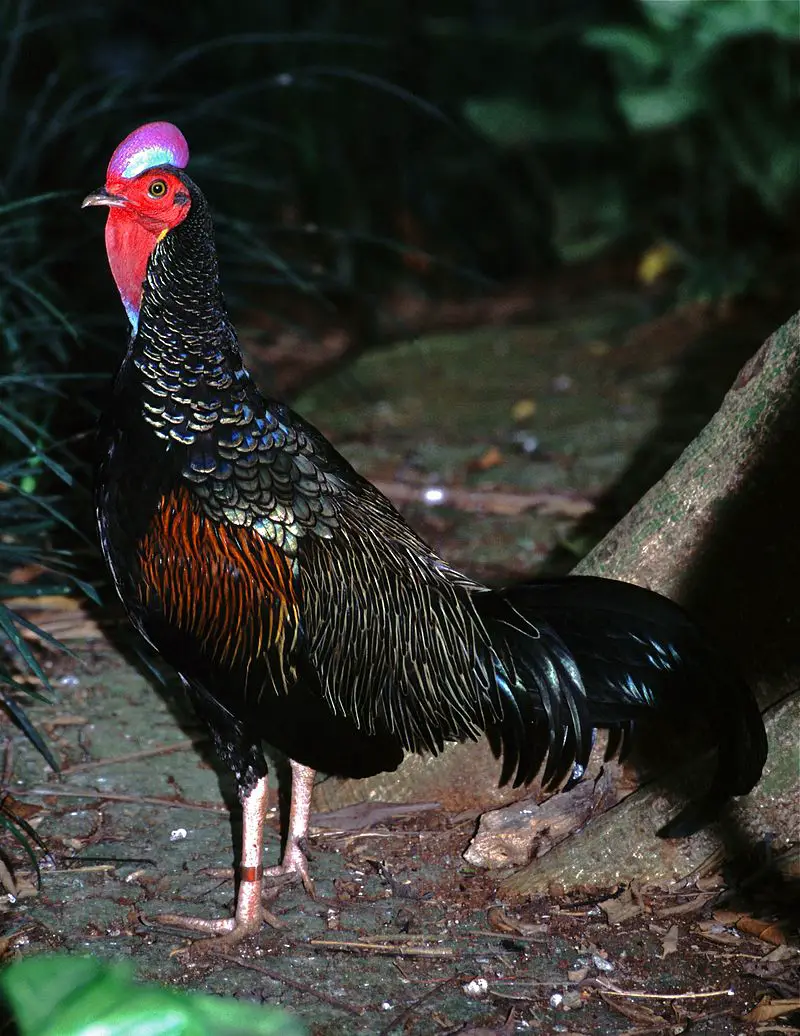
The Green Junglefowl is a species of bird belonging to the pheasant family Phasianidae. It stands up to 75 cm in length and can be found inhabiting dense forests throughout India, Southeast Asia, Indonesia and parts of China.
This beautiful creature has been around for at least four million years making it one of the oldest surviving members of its kind
Its distinct green plumage makes it stand out from other jungle fowls while also making it more vulnerable to predators in its natural environment.
Unfortunately hybridization with domestic chickens has also occurred as reported by some researchers over recent times which could threaten this unique species’ survival if not addressed properly.
Scientific classification:
| Kingdom | Animalia |
| Phylum | Chordata |
| Class | Aves |
| Order | Galliformes |
| Family | Phasianidae |
| Genus | Gallus |
| Species | G. varius |
Also Featured In: Java Birds You Should Know, Common Birds of Lombok
10. Cerulean Kingfisher

The Cerulean Kingfisher is a beautiful bird found in parts of Indonesia. It has an overall metallic blue colouring, making it look very similar to the common kingfisher – however, this species features white underneath instead of orange.
Males are typically bluer than females which have a more greenish cast. This type of kingfisher is sometimes referred to as the “small blue kingfisher” in Indonesia and elsewhere but should not be confused with other small birds that share its name.
Due to their unique plumage they can easily be distinguished from other species when seen up close or even at a distance depending on light conditions.
The Cerulean Kingfishers’ bright colours make them one of the most iconic members amongst Indonesian wildlife.
Scientific classification:
| Kingdom | Animalia |
| Phylum | Chordata |
| Class | Aves |
| Order | Coraciiformes |
| Family | Alcedinidae |
| Subfamily | Alcedininae |
| Genus | Alcedo |
| Species | A. coerulescens |
Also Featured In: Kingfishers Species, Birds that Found in Sumatra
11. Pink-Headed Fruit Dove
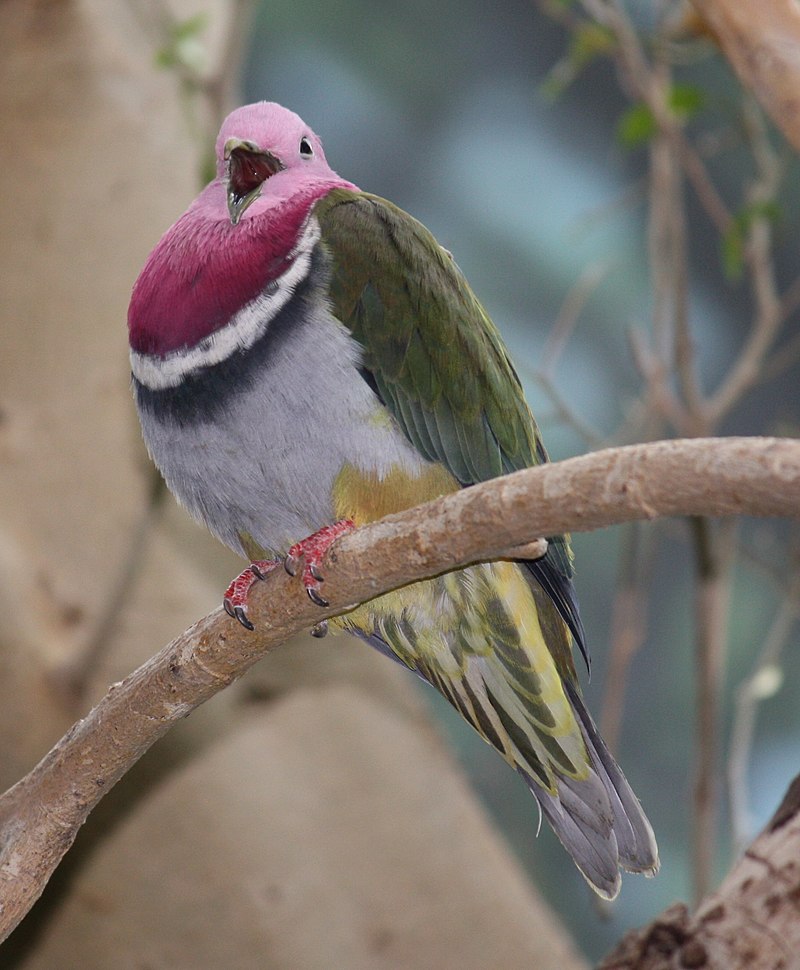
The Pink-headed Fruit Dove is an exquisite little bird, with a vibrant pink head and neck. It resides in the mountain forests of Indonesia at altitudes between 1000 to 2200 metres.
They build flimsy nests in trees and lay one or two white eggs per clutch. The rest of its plumage consists of bright green wings and tail, plus blue on its upper back feathers that shine under sunlight.
Its beak is blackish grey while orange eyes complete the stunning look. These birds feed mainly on small fruits found only in their native habitat such as figs but will also eat insects like termites for protein supplement .
In terms of behaviour they are shy creatures rarely seen alone out from hiding spots inside thick vegetation; however when breeding season comes they can be heard due to their distinctive chirping sounds which attracts mates during courtship displays.
Scientific classification:
| Kingdom | Animalia |
| Phylum | Chordata |
| Class | Aves |
| Order | Columbiformes |
| Family | Columbidae |
| Genus | Ptilinopus |
| Species | P. porphyreus |
Also Featured In: birds of pink, Birds that Commonly Found in Bali
12. Sumatran Green Pigeon
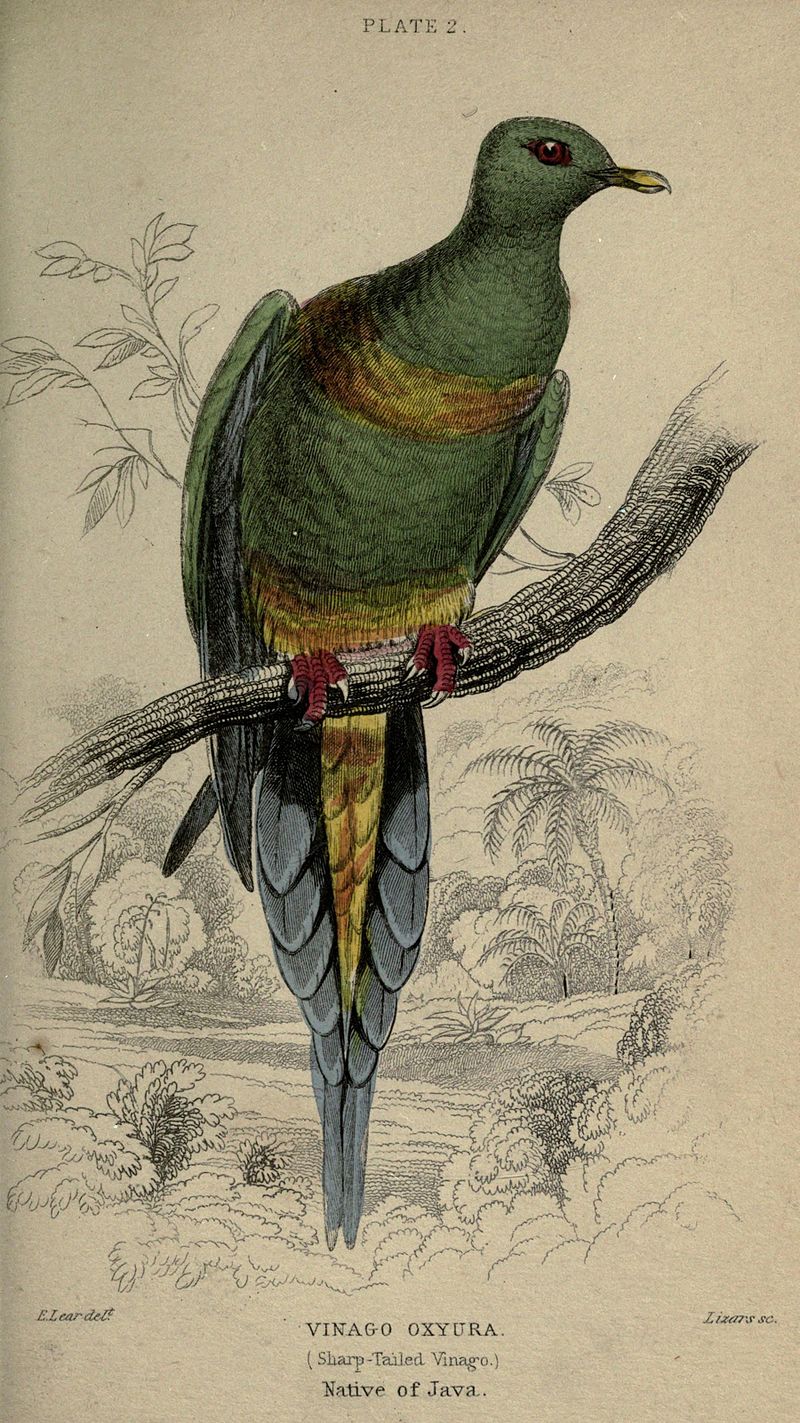
The Sumatran green pigeon is a bird that belongs to the Columbidae family, and it can only be found in Indonesia, specifically in Sumatra and western Java.
This magnificent bird inhabits subtropical or tropical moist lowland forests and subtropical or tropical moist montane forests.
Unfortunately, this species is facing a serious threat due to the loss of its natural habitat caused by human activities.
Nonetheless, its beauty and ecological relevance make it a valuable member of the avian fauna in the region.
The Sumatran green pigeon is cherished for its emerald-green feathers, inspiring wonder and awe to those who witness it in the wild.
Its conservation status remains a priority to protect it from potential extinction, and it reminds us of the importance of preserving natural habitats for biodiversity conservation.
Scientific classification:
| Kingdom | Animalia |
| Phylum | Chordata |
| Class | Aves |
| Order | Columbiformes |
| Family | Columbidae |
| Genus | Treron |
| Species | T. oxyurus |
13. Javan Lapwing
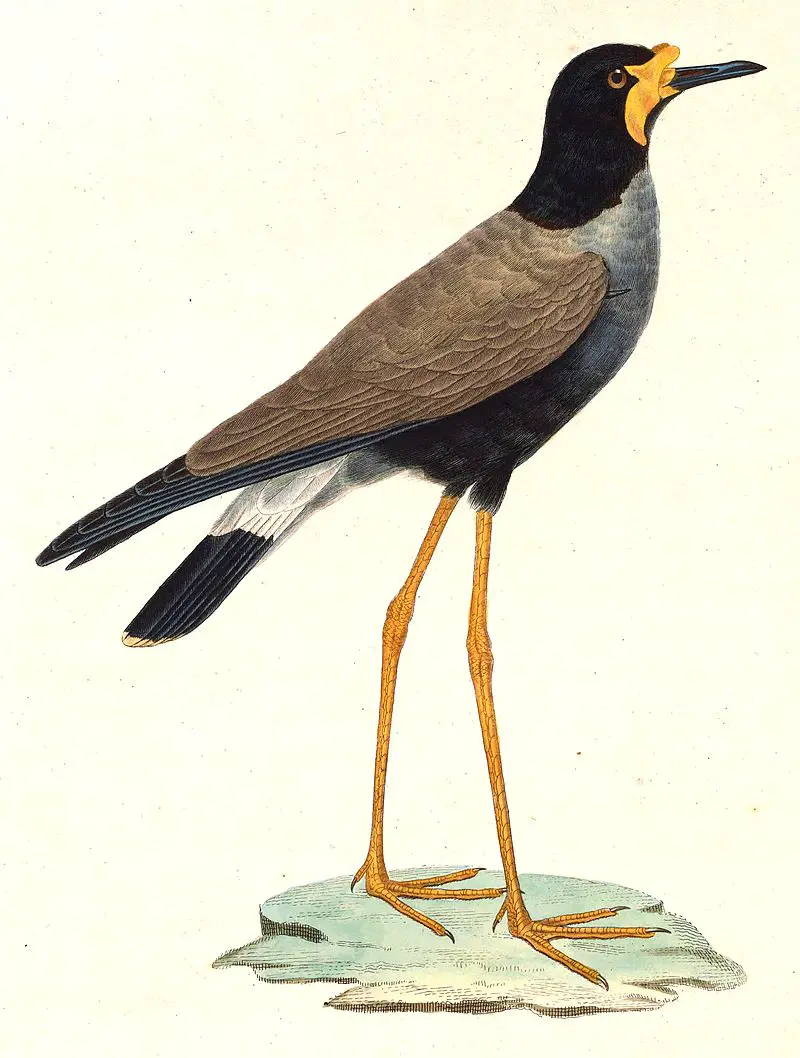
The Javan lapwing, also referred to as the Javanese lapwing, was a member of the lapwing family that lived in marshes and river deltas in Java, as well as possibly Sumatra and Timor.
With its long legs and large size, this wader was easy to spot. Unfortunately, the species hasn’t been seen since 1940 and is believed to be extinct.
The International Union for Conservation of Nature (IUCN) has classified the Javan lapwing as extinct, likely due to habitat loss and hunting.
The loss of this species is a reminder of the importance of conservation efforts to protect and preserve wildlife.
Scientific classification:
| Kingdom | Animalia |
| Phylum | Chordata |
| Class | Aves |
| Order | Charadriiformes |
| Family | Charadriidae |
| Genus | Vanellus |
| Species | V. macropterus |
14. Salvadori’s Nightjar
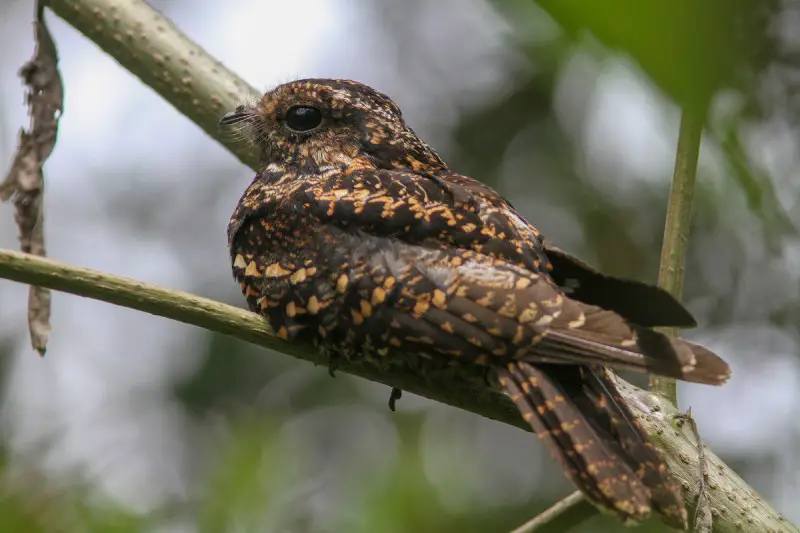
Salvadori’s nightjar, a species of nightjar from the family Caprimulgidae, is found only in Indonesia, specifically in the islands of Sumatra and Java. Its habitats include subtropical or tropical moist lowland and montane forests.
Unfortunately, the bird is currently at risk of habitat loss due to deforestation. Despite its threatened status, it remains an important member of its ecosystem, helping to control populations of insects during the night.
The bird’s physical characteristics are not mentioned in the given information, but it is safe to assume that it shares the same general features as other nightjar species, with a cryptic plumage used to camouflage itself during the day and large, wide mouths used for catching insects at night.
Scientific classification:
| Kingdom | Animalia |
| Phylum | Chordata |
| Class | Aves |
| Clade | Strisores |
| Order | Caprimulgiformes |
| Family | Caprimulgidae |
| Genus | Caprimulgus |
| Species | C. pulchellus |
15. Grey-Cheeked Green Pigeon
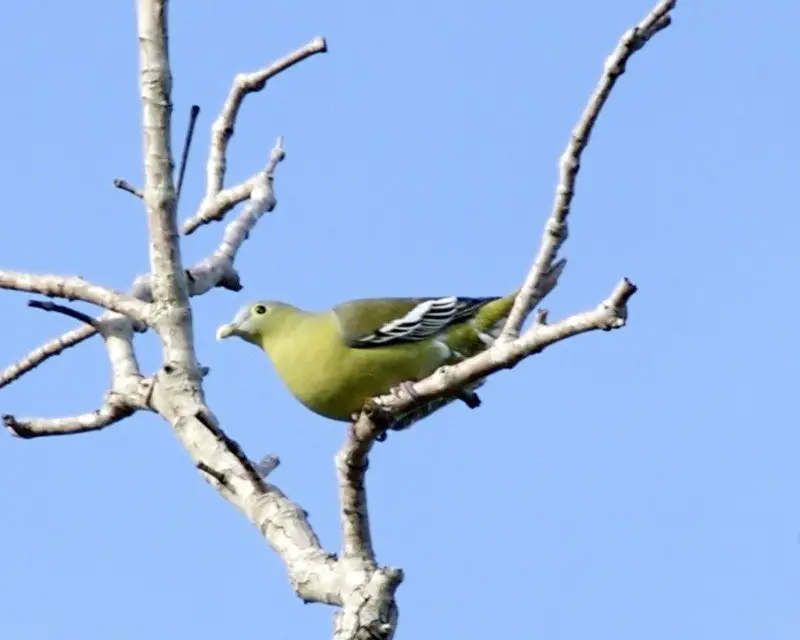
The Grey-cheeked green pigeon is a member of the Columbidae family and can only be found in Indonesia. Known for its beautiful grey and green feathers, this bird is a true gem of Southeast Asian aviary.
With an average size of 31 cm and a diet that mainly consists of fruit, it is a gentle bird that rarely hunts other creatures. Its unique features include grey cheeks and its soft, subtle cooing sounds that can be heard from afar.
This charming bird is a great source of awe and fascination for birdwatchers and nature enthusiasts alike.
Scientific classification:
| Kingdom | Animalia |
| Phylum | Chordata |
| Class | Aves |
| Order | Columbiformes |
| Family | Columbidae |
| Genus | Treron |
| Species | T. griseicauda |
Also Featured In: Birds that Live Near Halmahera,
16. Elegant Pitta
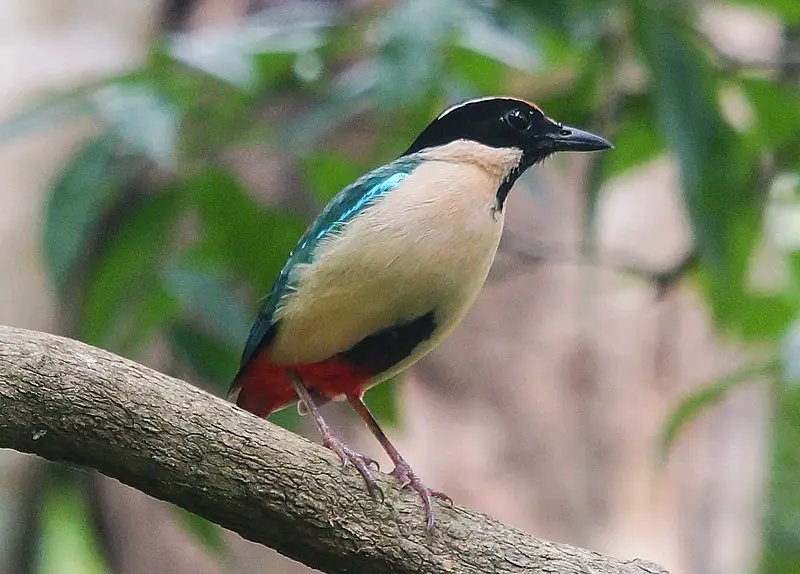
The Elegant Pitta is a beautiful passerine bird belonging to the Pittidae family. This bird is native to Indonesia and is found in the Lesser Sunda Islands and Moluccas.
The Dutch zoologist Coenraad Jacob Temminck first described and illustrated this bird from a specimen collected on Timor Island in 1836.
The species’ scientific name is Pitta elegans, which is fitting as the bird’s appearance is indeed elegant with its brightly colored feathers.
The Elegant Pitta is known for its distinct call and is often found in dense forests and woodland areas
Due to deforestation and habitat loss, the Elegant Pitta is considered a vulnerable species. Conservation efforts are underway to protect these beautiful birds and their habitats.
Scientific classification:
| Kingdom | Animalia |
| Phylum | Chordata |
| Class | Aves |
| Order | Passeriformes |
| Family | Pittidae |
| Genus | Pitta |
| Species | P. elegans |
Also Featured In: Birds in Sumba,
17. Bronze-Tailed Peacock-Pheasant
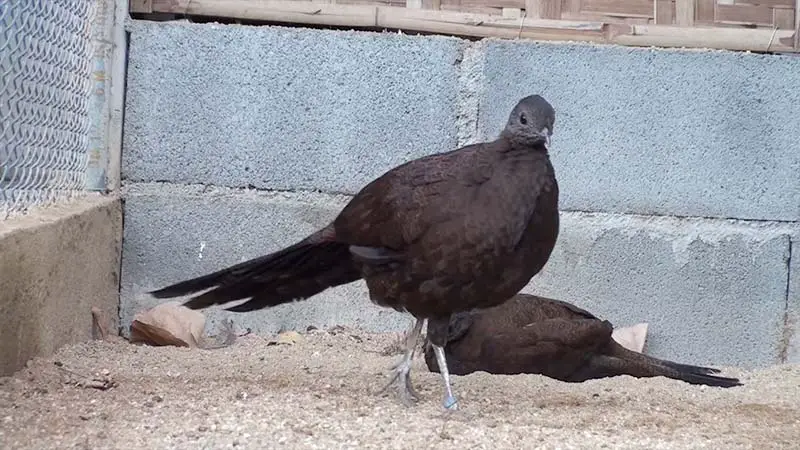
The Bronze-tailed peacock-pheasant, also known as the Sumatran peacock-pheasant, is a small bird found in Indonesia.
It has a dark brown body with a narrow, long tail consisting of sixteen feathers that are chestnut brown and metallic purplish bars near the tips.
The bird has dark grey legs and a relatively small head. Both males and females look alike. The bird is up to 56 cm long and is considered to be an attractive species.
It is known to inhabit the tropical forests of Sumatra and can be seen foraging on the forest floor for insects and seeds.
Unfortunately, this species has experienced a decline in population numbers and is considered to be vulnerable to the threat of habitat loss.
Efforts are being made to preserve and protect its natural habitat in order to ensure the survival of this beautiful bird for future generations.
Scientific classification:
| Kingdom | Animalia |
| Phylum | Chordata |
| Class | Aves |
| Order | Galliformes |
| Family | Phasianidae |
| Genus | Polyplectron |
| Species | P. chalcurum |
18. Barred Cuckoo-Dove
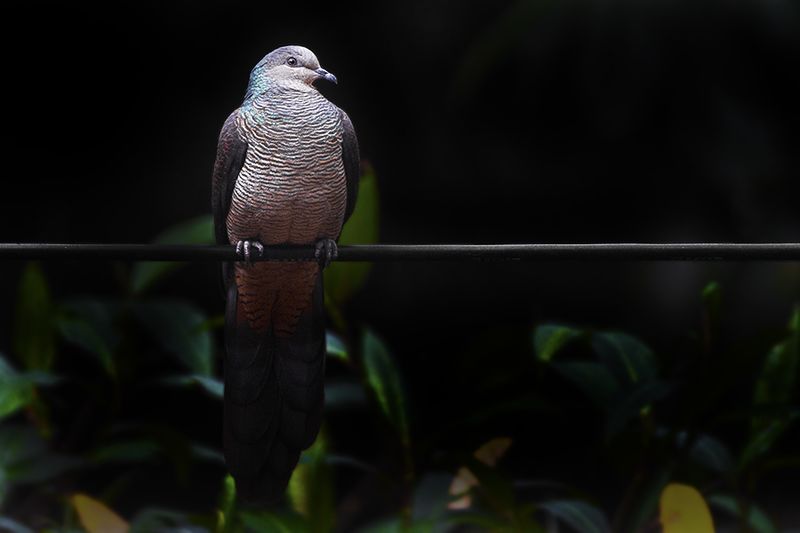
The barred cuckoo-dove is a bird found in South and Southeast Asia. It is a member of the Columbidae family and is considered Least Concern by the IUCN Red List.
The bird was first identified by Johann Georg Wagler in 1827 and has three known subspecies. Its throat and forehead are buff-colored, which becomes pinkish-grey.
Scientific classification:
| Kingdom | Animalia |
| Phylum | Chordata |
| Class | Aves |
| Order | Columbiformes |
| Family | Columbidae |
| Genus | Macropygia |
| Species | M. unchall |
Also Featured In: Birds that Commonly Found in Andhra Pradesh,